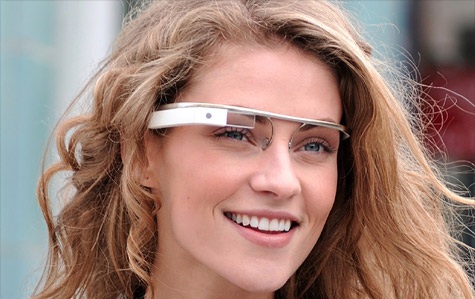Google Glass Receives First Software Update

The first software update for Google Glass has been issued that includes a number of new features
Users of the Google Glass device have started to receive their first software updates for their head-mounted computers.
The update includes a dozen new features that Google hopes will make the devices even more useful.
First Update
The new Google Glass XE5 software update is being rolled out to Glass users as their devices are connected to their chargers, according to a report from Phandroid.
The new features in the XE5 update, according to Phandroid, include the following:
- A change to the device’s sync policy. It now requires power as well as Wi-Fi for background uploads.
- Crash reporting for the devices.
- Incoming Google+ notifications for direct shares, comments and +mentions.
- Incoming Google+ Hangout notifications.
- Increased speed for transcription of queries and messages.
- Users can now use a long-press to search from anywhere in the user interface.
- International number dialling and Short Message Service (SMS) are now included.
- A new On-Head Detection calibration flow for improved operation.
- Appearance of the devices serial number on the device info card to make it easier to find.
- Improved and more reliable estimation of battery charge time that is remaining.
The software update is performed automatically by Glass via Wi-Fi after it is plugged into its charger. “The process can take more than a few minutes (it is a pretty substantial update),” reported Phandroid.
 The first Google Glass units began shipping in April to developers who signed up at last June’s Google I/O conference to buy an early set for $1,500 (£965) for testing and development. Google also then began shipping Glass units to lucky users who were selected in a contest for the opportunity to buy their own early versions of Glass. In February, Google expanded its nascent test project for its Glass eyewear-mounted computer by inviting interested applicants to submit proposals for a chance to buy an early model and become part of its continuing development. In March, Google also began notifying a pool of applicants who were selected to purchase the first 8,000 sets of Google Glass when they become available for real-world use and testing later this year by consumers. Those selected applicants are beginning to receive their units in waves.
The first Google Glass units began shipping in April to developers who signed up at last June’s Google I/O conference to buy an early set for $1,500 (£965) for testing and development. Google also then began shipping Glass units to lucky users who were selected in a contest for the opportunity to buy their own early versions of Glass. In February, Google expanded its nascent test project for its Glass eyewear-mounted computer by inviting interested applicants to submit proposals for a chance to buy an early model and become part of its continuing development. In March, Google also began notifying a pool of applicants who were selected to purchase the first 8,000 sets of Google Glass when they become available for real-world use and testing later this year by consumers. Those selected applicants are beginning to receive their units in waves.
Each Google Glass device includes adjustable nose pads and a high-resolution display that Google said is the equivalent of a 25-inch high-definition screen from 8 feet away. The glasses also boast a built-in camera that takes 5-megapixel photos and video at 720p. Audio is delivered to the wearer through their bones, using a bone-conduction transducer that previously had been revealed in earlier reports.
Developer Push
Glass comes with its own dedicated micro-USB cable and charger. Glass is built to be compatible with any Bluetooth-capable phone, while its companion MyGlass app requires Android 4.0.3 (Ice Cream Sandwich) or higher.
Also in April, Google released the open-source Android-based kernel code for its Glass project to encourage software developers to begin much more Google Glass apps development in a big way.